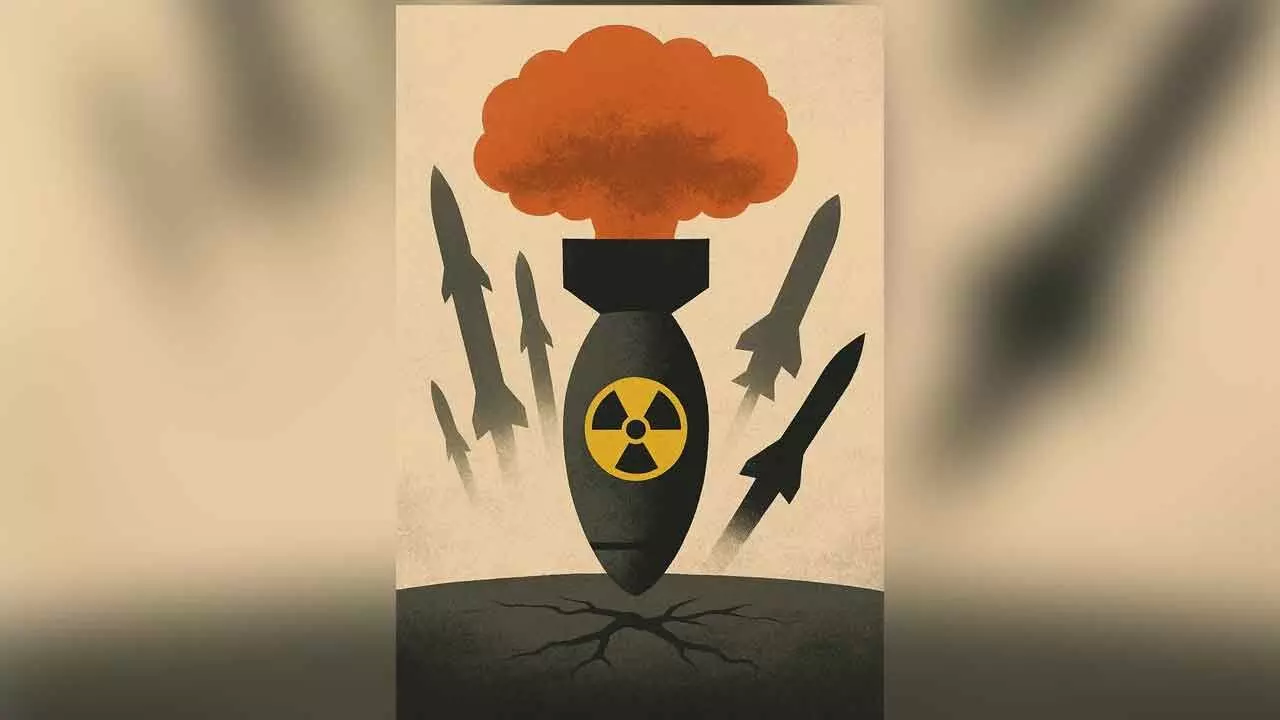A new nuclear cold war brews as disarmament dreams fade
From Washington to Beijing, nuclear rearmament gathers pace, reviving Cold War fears amid the breakdown of global arms treaties
A new nuclear cold war brews as disarmament dreams fade

A dangerous new nuclear arms race is emerging at a time when arms control regimes are severely weakened. Nearly all of the nine nuclear-armed states- the India, United States, Russia, the United Kingdom, France, China, Pakistan, the Democratic People’s Republic of Korea (North Korea) and Israel- continued intensive nuclear modernization programmes in 2024, upgrading existing weapons and adding newer versions.
Of the total global inventory of an estimated 12,241 warheads in January 2025, about 9,614 were in military stockpiles for potential use (see the table below).
An estimated 3,912 of those warheads were deployed with missiles and aircraft and the rest were in central storage. Around 2,100 of the deployed warheads were kept in a state of high operational alert on ballistic missiles. Nearly all of these warheads belonged to Russia or the USA, but China may now keep some warheads on missiles during peacetime.
‘The era of reductions in the number of nuclear weapons in the world, which had lasted since the end of the cold war, is coming to an end,’ said Hans M Kristensen, Associate Senior Fellow with SIPRI’s Weapons of Mass Destruction Programme and Director of the Nuclear Information Project at the Federation of American Scientists (FAS). ‘Instead, we see a clear trend of growing nuclear arsenals, sharpened nuclear rhetoric and the abandonment of arms control agreements.’
Russia and the USA together possess around 90 per cent of all nuclear weapons. The sizes of their respective military stockpiles (i.e. useable warheads) seem to have stayed relatively stable in 2024, but both states are implementing extensive modernization programmes that could increase the size and diversity of their arsenals in the future.
If no new agreement is reached to cap their stockpiles, the number of warheads they deploy on strategic missiles seems likely to increase after the bilateral 2010 Treaty on Measures for the Further Reduction and Limitation of Strategic Offensive Arms (New START) expires in February 2026.
Nevertheless, it is likely that both Russian and US deployments of nuclear weapons will rise in the years ahead. The Russian increase would mainly happen as a result of modernizing the remaining strategic forces to carry more warheads on each missile and reloading some silos that were emptied in the past.
The US increase could happen as a result of more warheads being deployed to existing launchers, empty launchers being reactivated and new non-strategic nuclear weapons being added to the arsenal. Nuclear advocates in the USA are pushing for these steps as a reaction to China’s new nuclear deployments.
By January 2025, China had completed or was close to completing around 350 new ICBM silos in three large desert fields in the north of the country and three mountainous areas in the east. Depending on how it decides to structure its forces, China could potentially have at least as many ICBMs as either Russia or the USA by the turn of the decade. Yet even if China reaches the maximum projected number of 1,500 warheads by 2035, that will still amount to only about one third of each of the current Russian and US nuclear stockpiles.
Although the UK is not thought to have increased its nuclear weapon arsenal in 2024, its warhead stockpile is expected to grow in the future, after the 2023 Integrated Review Refresh confirmed earlier plans to raise the ceiling on warhead numbers.
During election campaigning, the Labour government elected in July 2024 declared its commitment to continuing to build four new nuclear-powered ballistic missile submarines (SSBNs), maintaining the UK’s continuous at-sea nuclear deterrence, and delivering ‘all the needed upgrades’ to the UK’s nuclear arsenal in future.
However, the government now faces significant operational and financial challenges.
In 2024 France continued its programmes to develop a third-generation SSBN and a new air-launched cruise missile, as well as to refurbish and upgrade existing systems, including an improved ballistic missile with a new warhead modification.
India is believed to have once again slightly expanded its nuclear arsenal in 2024 and continued to develop new types of nuclear delivery system. India’s new ‘canisterized’ missiles, which can be transported with mated warheads, may be capable of carrying nuclear warheads during peacetime, and possibly even multiple warheads on each missile, once they become operational.
Pakistan also continued to develop new delivery systems and accumulate fissile material in 2024, suggesting that its nuclear arsenal might expand over the coming decade. In early 2025 tensions between India and Pakistan briefly spilled over into armed conflict.
Israel conducted a test of a missile propulsion system that could be related to its Jericho family of nuclear-capable ballistic missiles. Israel also appears to be upgrading its plutonium production reactor site at Dimona.

